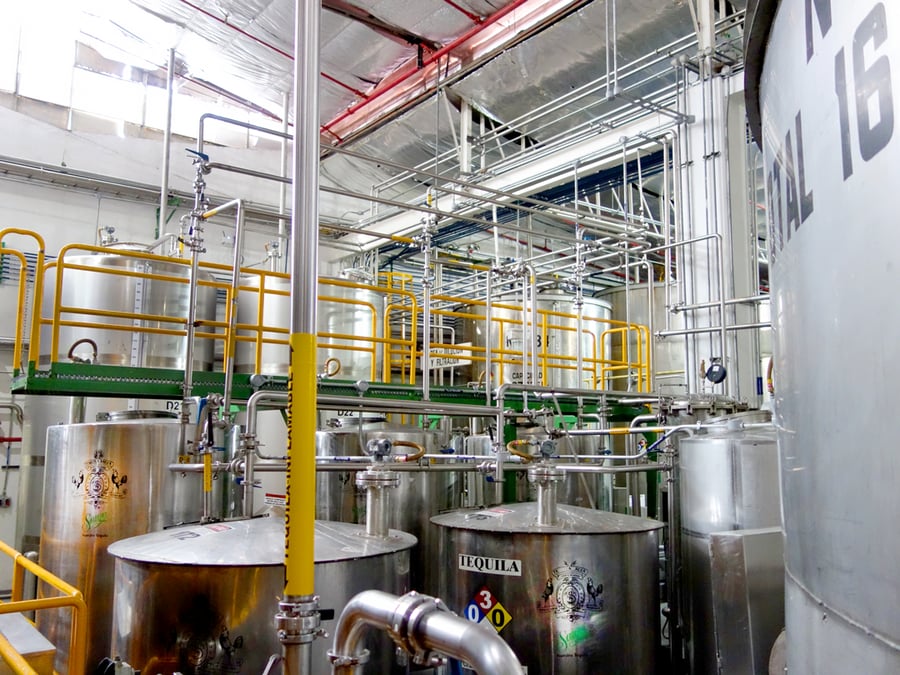 One of Casa Sauza's principal commitments is to be environmentally friendly in all our activities, always focusing on searching for and implementing new ways to reduce our environmental impact. I will expose some examples of our achievements in the following text:
One of Casa Sauza's principal commitments is to be environmentally friendly in all our activities, always focusing on searching for and implementing new ways to reduce our environmental impact. I will expose some examples of our achievements in the following text:
How does Casa Sauza Manage Waste/Residues?
Talking about sustainable successes, waste management in Tequila Sauza is one of them. When handling special management waste, that is, all those residues generated in different processes that don't present specific characteristics to consider them dangerous, Casa Sauza is categorized as a significant waste source since it exceeds 10 tons per year.
Due to the nature of the tequila-making process, it's not possible to reduce the amount of waste. However, we can focus on the relevant aspects of creating awareness about waste treatment and utilization.
Regarding dangerous waste, environmental authorities initially labeled Casa Sauza as a big waste generator; however, we have changed that scenario over time, as shown in the following lines.
How much waste does Casa Sauza manage?
We initiated our operations by the end of 2007, when we began supervising the amounts of waste and the final disposition and treatment of both types of residues received. Through this supervision, we discovered we correctly handled only 84% of the special management waste with environmentally friendly treatments.
Regarding the dangerous waste, the annual generation was above 22 tons, although it had a controlled final destination within the legal policies and met the official standards.
At that moment, we began to establish goals for our industry. In the first case of special management waste, we committed to increasing the waste percentage treated and utilized in eco-friendly sustainable processes, aiming for daily treatment rates closer to 100%.
The primary objective of hazardous waste management has been to reduce the annual amount of waste generated and achieve a lower production category. But what goals have we achieved with special management waste, and how have we done it?
The official standards authorize us to treat 100% of our special management waste; however, we can utilize only 99.9% for other production processes.
How does Casa Sauza Manage Bagasse Waste?
Bagasse is the highest-volume waste we use in compost elaboration, and we utilize 100% of it to improve soil quality in patches where Tequila Sauza cultivates the agave plant for tequila production. This practice reduces the use of agrochemicals and decreases problems related to land erosion and salinization.
How does Casa Sauza Manage Paper, Carton, Glass, and Plastic Waste?
We must deliver paper, cartons, and plastic waste to recycling companies. In the case of glass, we return it to the company that provides us with glass bottles, allowing them to reuse it as raw material for new Tequila Sauza bottles.
We ensure that the remaining 0.1% of waste, due to the lack of adequate recycling technology in our country, is delivered to proper waste places. In the meantime, we are working with providers to reduce or change the use of supplies that generate this kind of waste volume and finding solutions to reduce it.
What does Casa Sauza do with Dangerous Waste?
Our most significant achievement in dangerous waste has been reducing our waste production to 3-5 tons in the last reported year (2015), which is currently trending downward.
The work in the tequila industry has been broad, focusing first on high-volume waste and other aspects of waste treatment. For example, the soil polluted with hydrocarbons has been eliminated 100% by substituting the fuel used to generate steam.
Another high-volume waste is mud with caustic soda, which we have reduced by nearly 100%. Initially, we dehydrate the mud at the generation source and transport the water to our wastewater treatment area, separating it from the solids. Later, we automated this process until we reached an optimum level, significantly reducing the amount of caustic soda used during the washing process. The main benefit of this process is that the resulting mud has no toxic characteristics, making it a special management waste that is easier to treat.
.png?width=50&height=50&name=10.CS-Redondo%20(1).png)
